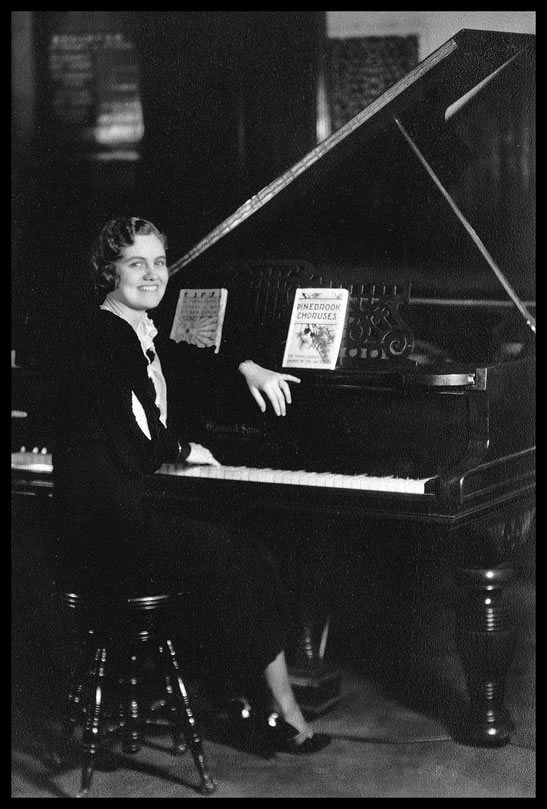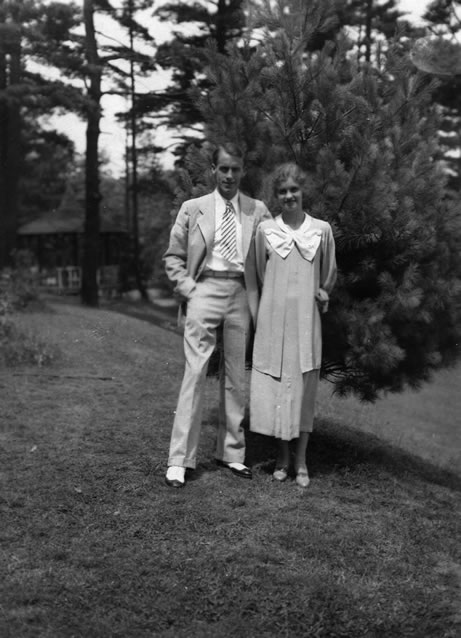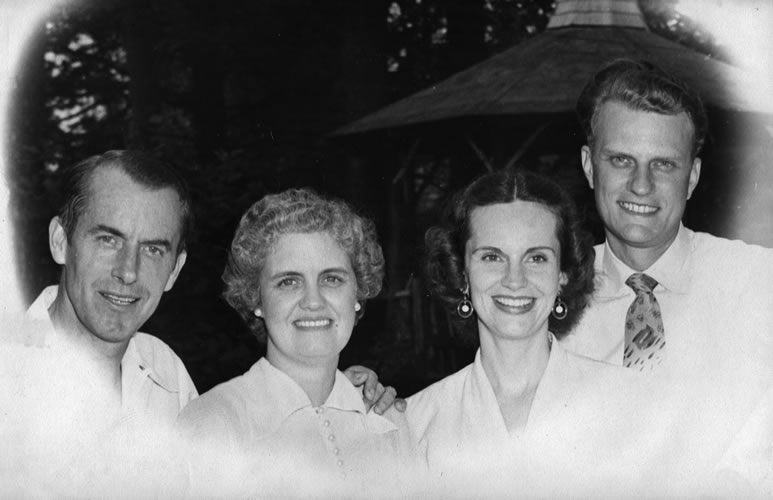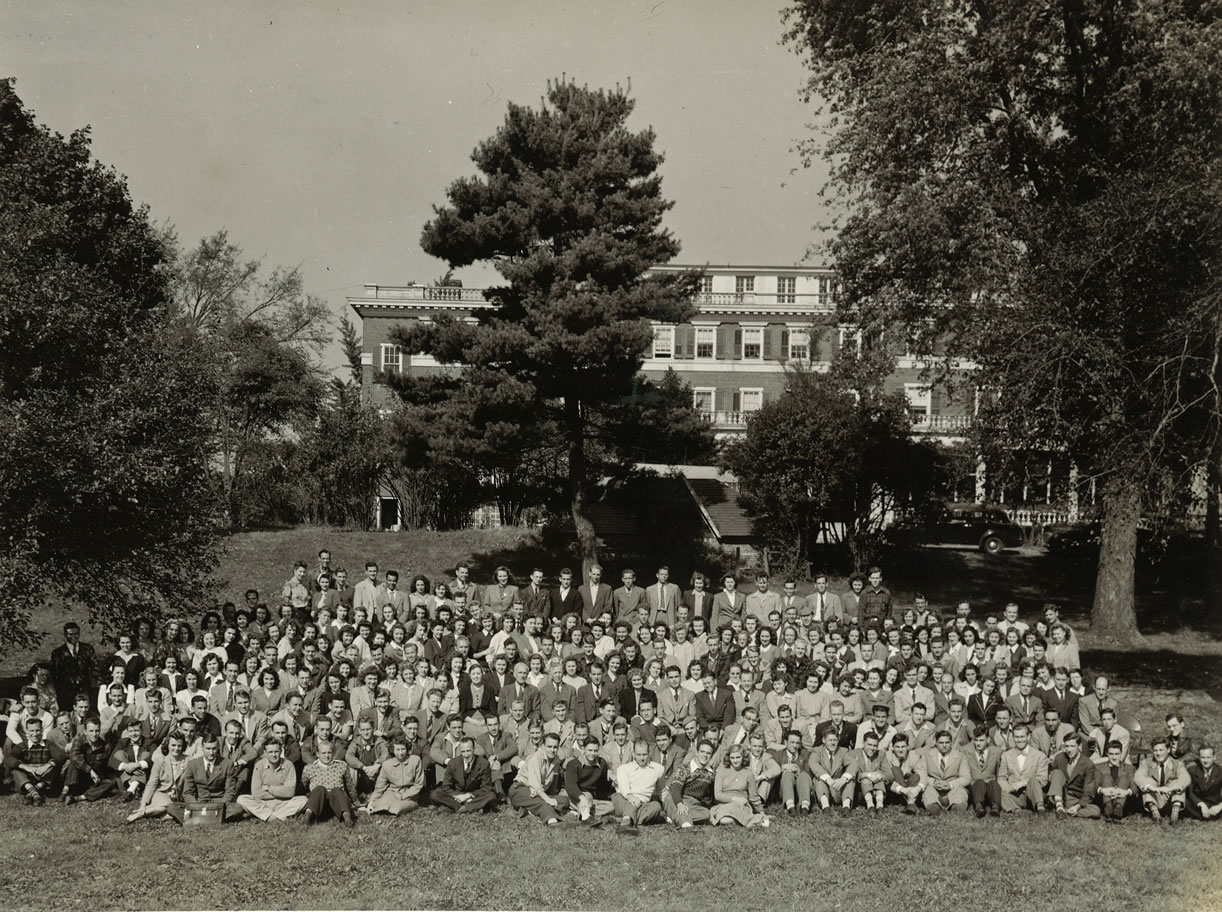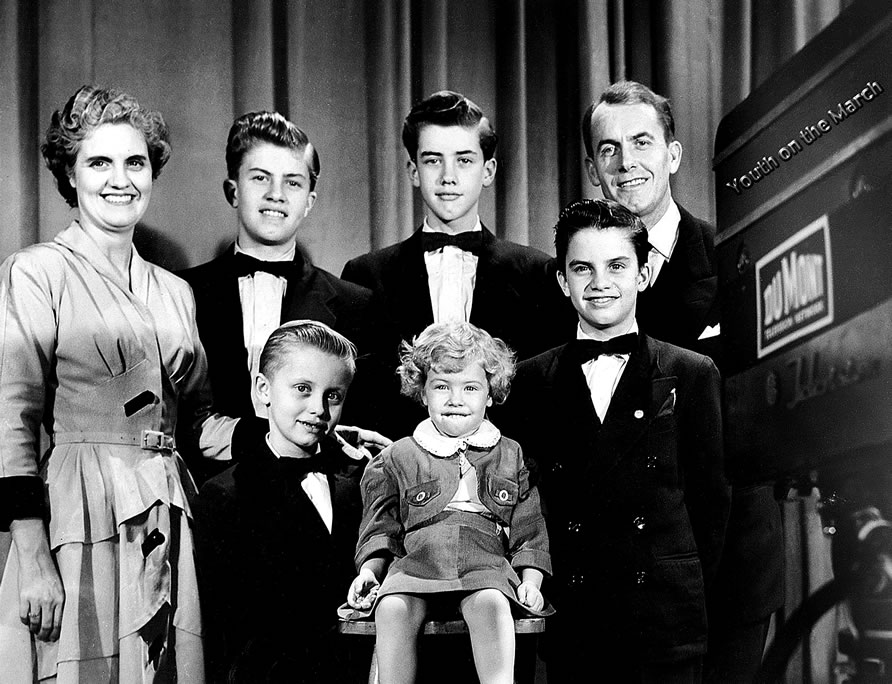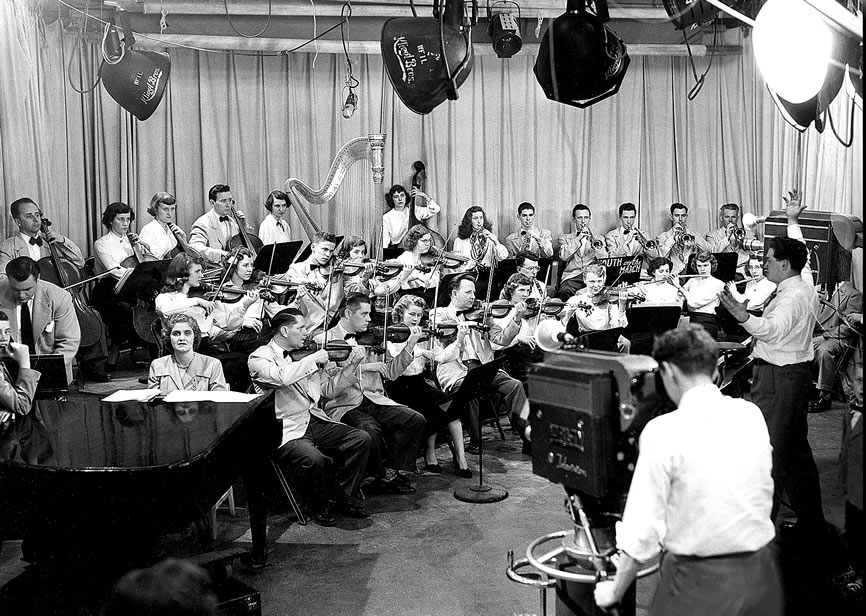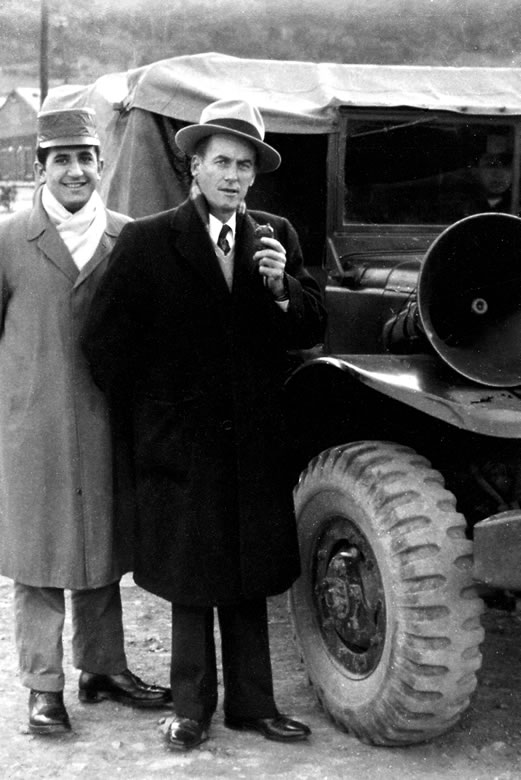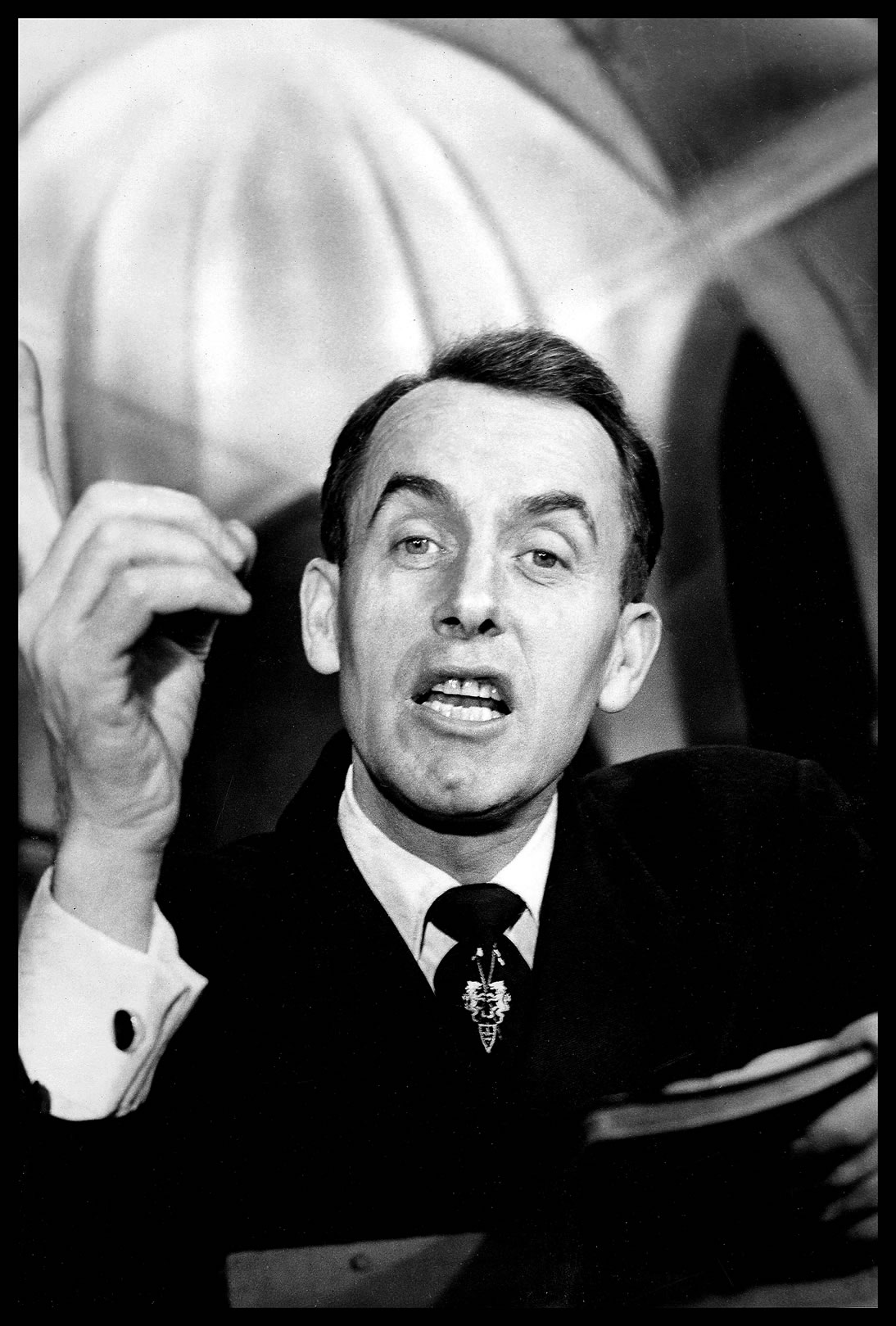
“You there, in front of your television set –
I’m talking to you.”
Percy Crawford, “Youth on the March”
Coast-to-Coast Network Television, 1949-1953
Percy Crawford was a youth-oriented, radio and television evangelist and prominent fundamentalist leader, whose soul-winning evangelistic work rekindled the spirit of revivalism in the 1930s and 40s, and whose sincerity and moderate tone helped to remake the public image of fundamentalism when it was languishing and marginalized in American life. With his unique, rapid-fire preaching style and his wife Ruth’s high-quality musical program, he skillfully used the new media of radio and television to carry the gospel to millions across the nation. In the late 1950s, he saw the potential of FM radio and UHF television and built the first successful Christian broadcasting network, thereby opening up a whole new realm of communication for evangelistic purposes.
 Early Years and Conversion. Percy Bartimus Crawford was born October 20, 1902 in Minnedosa, Manitoba, Canada. His family moved to Vancouver where Percy grew up, the youngest of three boys. He was an adventuresome youth, but had to drop out of school to help support the family after his father left his mother and the three children. He left home and entered the U.S. while still a teenager.
Early Years and Conversion. Percy Bartimus Crawford was born October 20, 1902 in Minnedosa, Manitoba, Canada. His family moved to Vancouver where Percy grew up, the youngest of three boys. He was an adventuresome youth, but had to drop out of school to help support the family after his father left his mother and the three children. He left home and entered the U.S. while still a teenager.
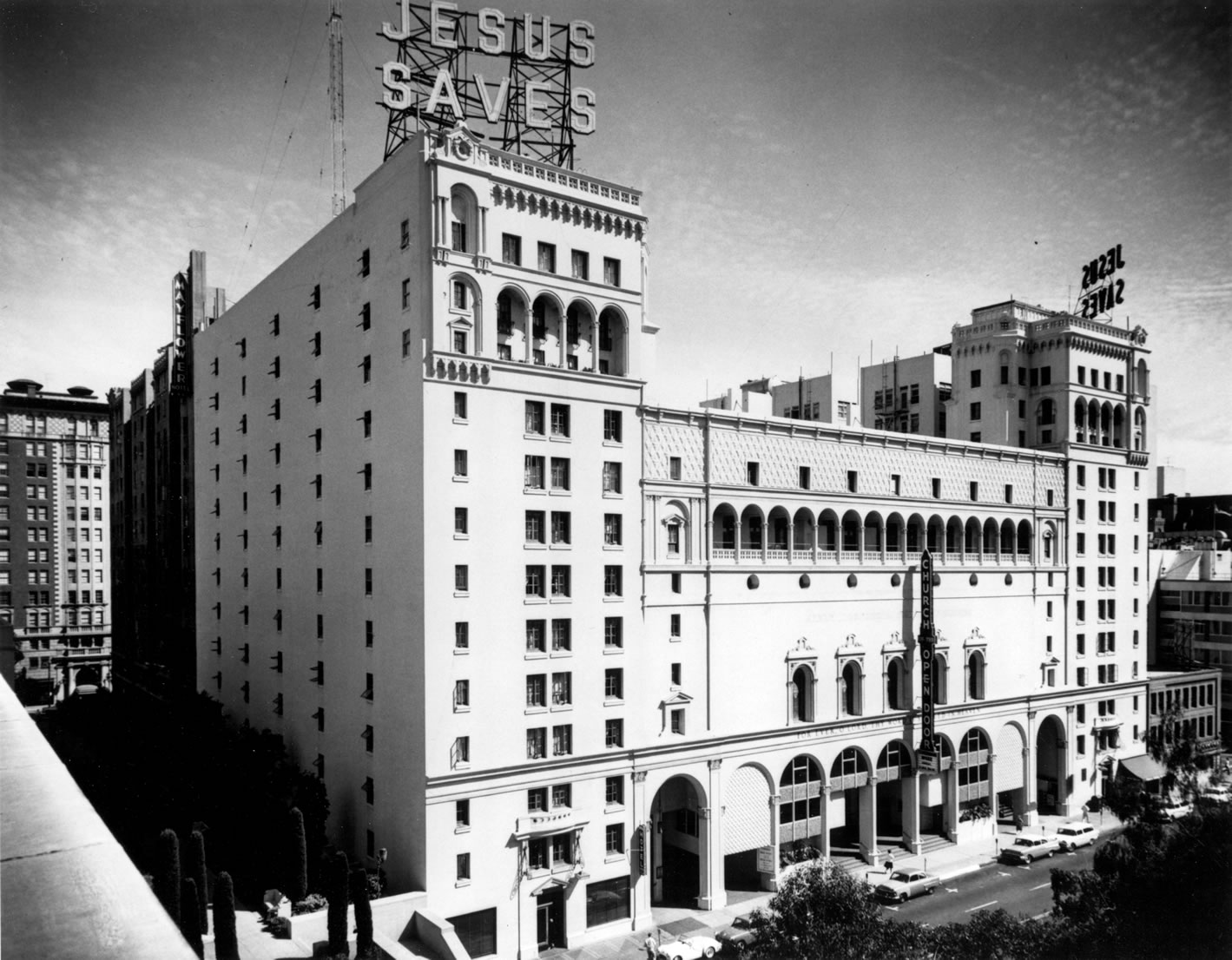 After finishing high school at the YMCA school in Portland, Oregon, he prepared to enter the University of California (at Los Angeles) in the fall of 1923. But shortly after arriving in Los Angeles, he attended a Sunday morning service at Reuben Torrey’s Church of the Open Door, September 23, 1923, and was converted under the preaching of itinerant evangelist Willie Nicholson.
After finishing high school at the YMCA school in Portland, Oregon, he prepared to enter the University of California (at Los Angeles) in the fall of 1923. But shortly after arriving in Los Angeles, he attended a Sunday morning service at Reuben Torrey’s Church of the Open Door, September 23, 1923, and was converted under the preaching of itinerant evangelist Willie Nicholson.
Education. Uncertain of his future, he withdrew his application to UCLA 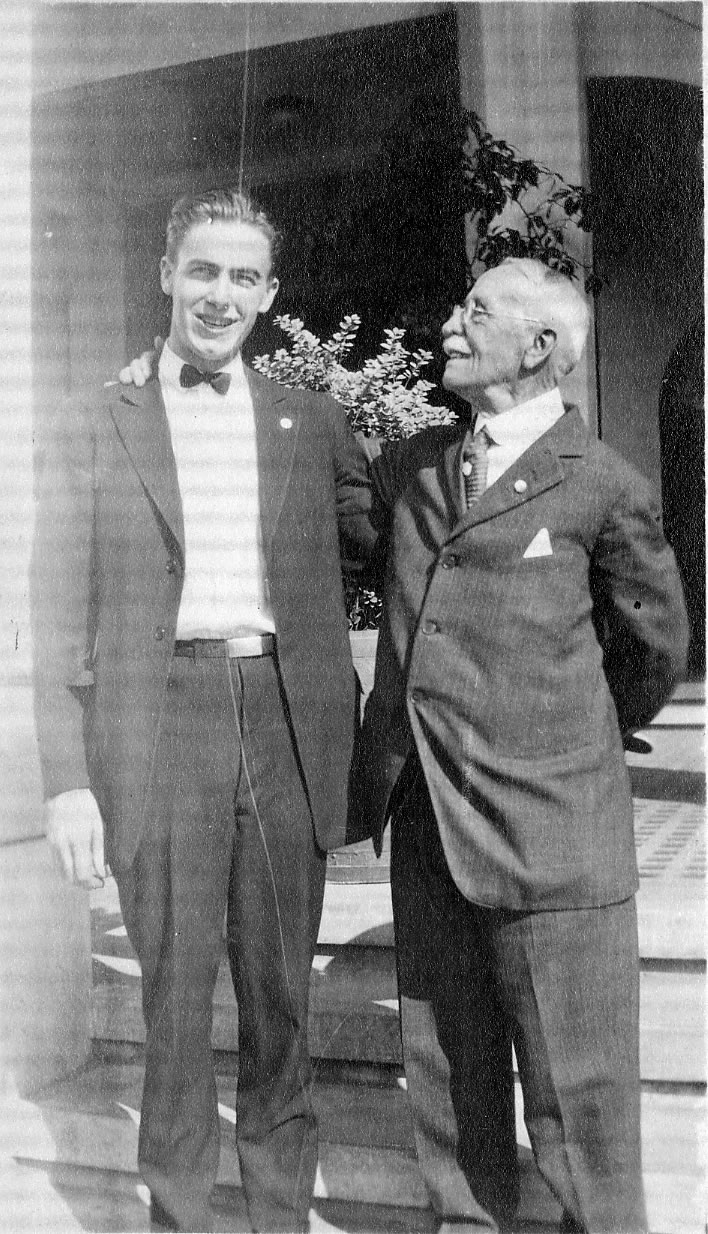 and enrolled at the Bible Institute of Los Angeles (BIOLA) in 1924 [photo], where Thomas Horton [photo] and Reuben Torrey became his chief mentors.
and enrolled at the Bible Institute of Los Angeles (BIOLA) in 1924 [photo], where Thomas Horton [photo] and Reuben Torrey became his chief mentors.
At BIOLA, he discovered his gift of evangelism, and committed himself to full-time Christian service, vowing to his new-found savior: “I’ll give you every drop of blood I have.” He went on to Wheaton College and earned his bachelors degree in 1929; and in the same year obtained U.S. citizenship.
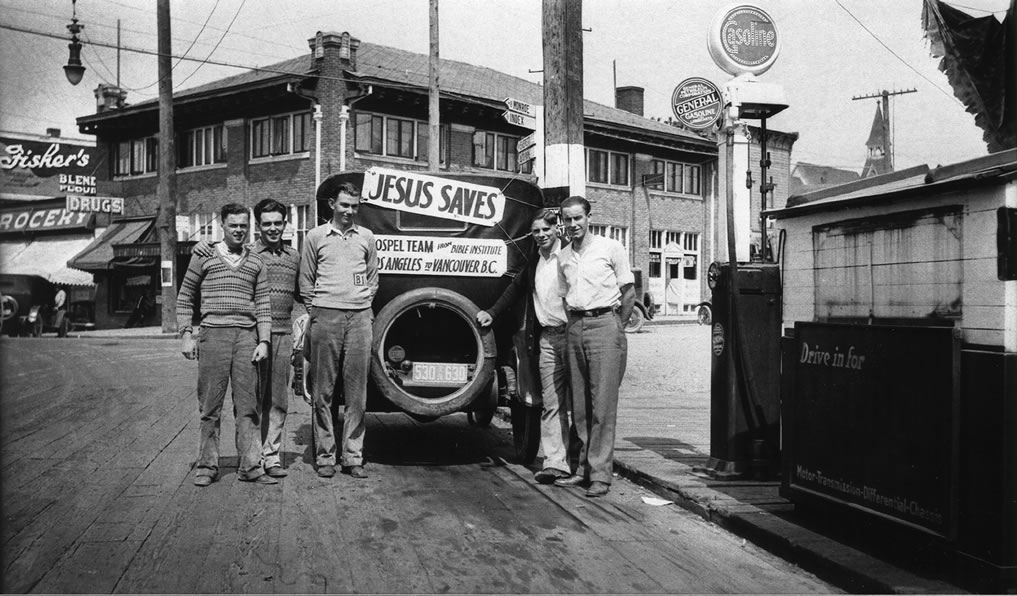 During the summer months of his student years at BIOLA and Wheaton, he took evangelistic tours with his gospel quartet across the country, bringing hundreds of men and women to Christ.
During the summer months of his student years at BIOLA and Wheaton, he took evangelistic tours with his gospel quartet across the country, bringing hundreds of men and women to Christ.
Early Ministry in Philadelphia. In the summer of 1931, while still a seminarian at Westminster Theological Seminary in Philadelphia, he conducted a series of open air meetings from the balcony of the abandoned First Presbyterian Church facing Washington Square, and then in October, started broadcasting his services from the Barnes Memorial Mission on one station, calling it the Young People’s Church of the Air.
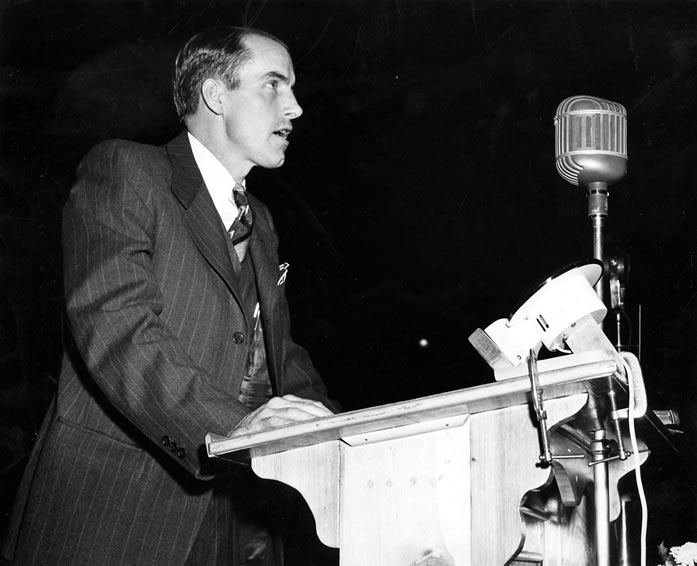 Within a decade he built a radio church that aired on over 400 stations, and an organization around the radio program that included (evangelistic) fishing clubs, a bookstore and book clubs, a summer Bible conference, and a liberal arts college.
Within a decade he built a radio church that aired on over 400 stations, and an organization around the radio program that included (evangelistic) fishing clubs, a bookstore and book clubs, a summer Bible conference, and a liberal arts college.
Ruth Crawford. At the start of the broadcasts, he took on a very young pianist, Ruth Duvall, who soon became his wife and life-long partner in evangelism. Ruth assembled a high-quality musical entourage—vocal quartet, brass quartet, men’s and women’s ensembles, and later a full orchestra—that distinguished Percy’s evangelistic ministry from others of his era, and gave it wide appeal.
Pinebrook Bible Conference. In 1933 he started Pinebrook Bible Conference for young people in the Pocono Mountains of Pennsylvania, and brought to it the nation’s leading Bible teachers and musicians, (including William Bell Riley, Oliver Buswell, Walter MacDonald, Will Houghton, Bob Ketcham, George Beverly Shea, Billy Graham and Cliff Barrows, Harold Laird, Merril MacPherson, Jack Wyrtzen, and many others). A few years later he added Shadowbrook Camp for boys and Mountainbrook Camp for girls. Percy directed the camps for 28 years.
The King’s College. In 1936, he founded The King’s College, a Christian liberal arts college in Belmar New Jersey [photo above] and later relocated the college to New Castle, Delaware , and then to Briarcliff Manor, New York. He was president of the college for 23 years, until his death.
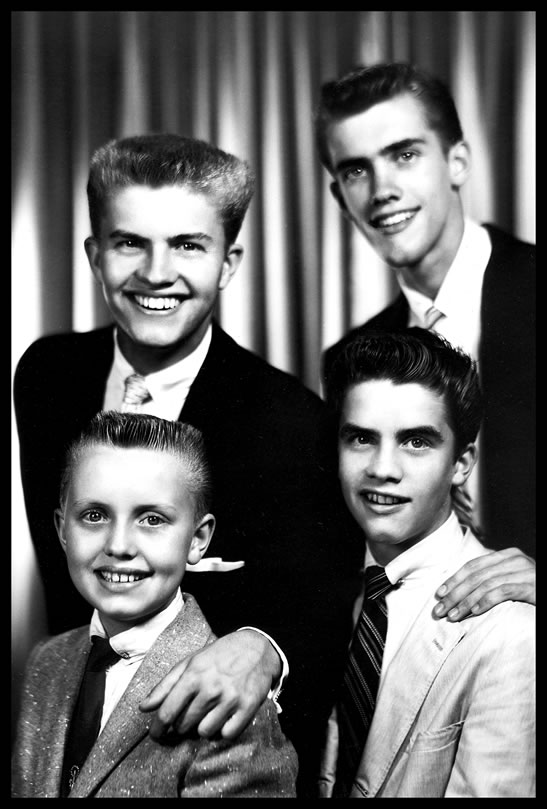 Meetings and Rallies. He and Ruth traveled 40-50,000 miles a year by car with the quartet and later their five children, Don, Dick, Dan, Dean, and Donna Lee, conducting meetings and rallies mainly in the northeast and on cross-country tours to the west coast. In 1945, Percy was the principal speaker before 70,000 people at the gigantic Youth for Christ Memorial Day Victory rally at Soldiers Field. Percy and Ruth livened up their meetings with upbeat music and easy-to-learn choruses. (Over the years, the Young People’s Church of the Air put out thirteen songbooks that set a new standard for Christian music.) In his sermons, Percy deliberately avoided all controversy and negative personal attacks in his preaching, and in this way helped to repair the badly damaged public image of fundamentalism.
Meetings and Rallies. He and Ruth traveled 40-50,000 miles a year by car with the quartet and later their five children, Don, Dick, Dan, Dean, and Donna Lee, conducting meetings and rallies mainly in the northeast and on cross-country tours to the west coast. In 1945, Percy was the principal speaker before 70,000 people at the gigantic Youth for Christ Memorial Day Victory rally at Soldiers Field. Percy and Ruth livened up their meetings with upbeat music and easy-to-learn choruses. (Over the years, the Young People’s Church of the Air put out thirteen songbooks that set a new standard for Christian music.) In his sermons, Percy deliberately avoided all controversy and negative personal attacks in his preaching, and in this way helped to repair the badly damaged public image of fundamentalism.
It was through his nationwide radio broadcast and rallies in the 1930s and 1940s that Percy Crawford, along with others of his generation, kept mass evangelism alive during this critical period between the Scopes trial (1925) and the Billy Graham era.
Television. In 1949, he took his radio program onto network (ABC) television with the first coast-to-coast religious program, Youth on the March. After three years with ABC, he moved to the Dumont network (1952-53). In 1953-54, he took his evangelistic team on an 18-week world tour, the highlight of which was a grueling three weeks in Korea, preaching to the soldiers on the frontline.
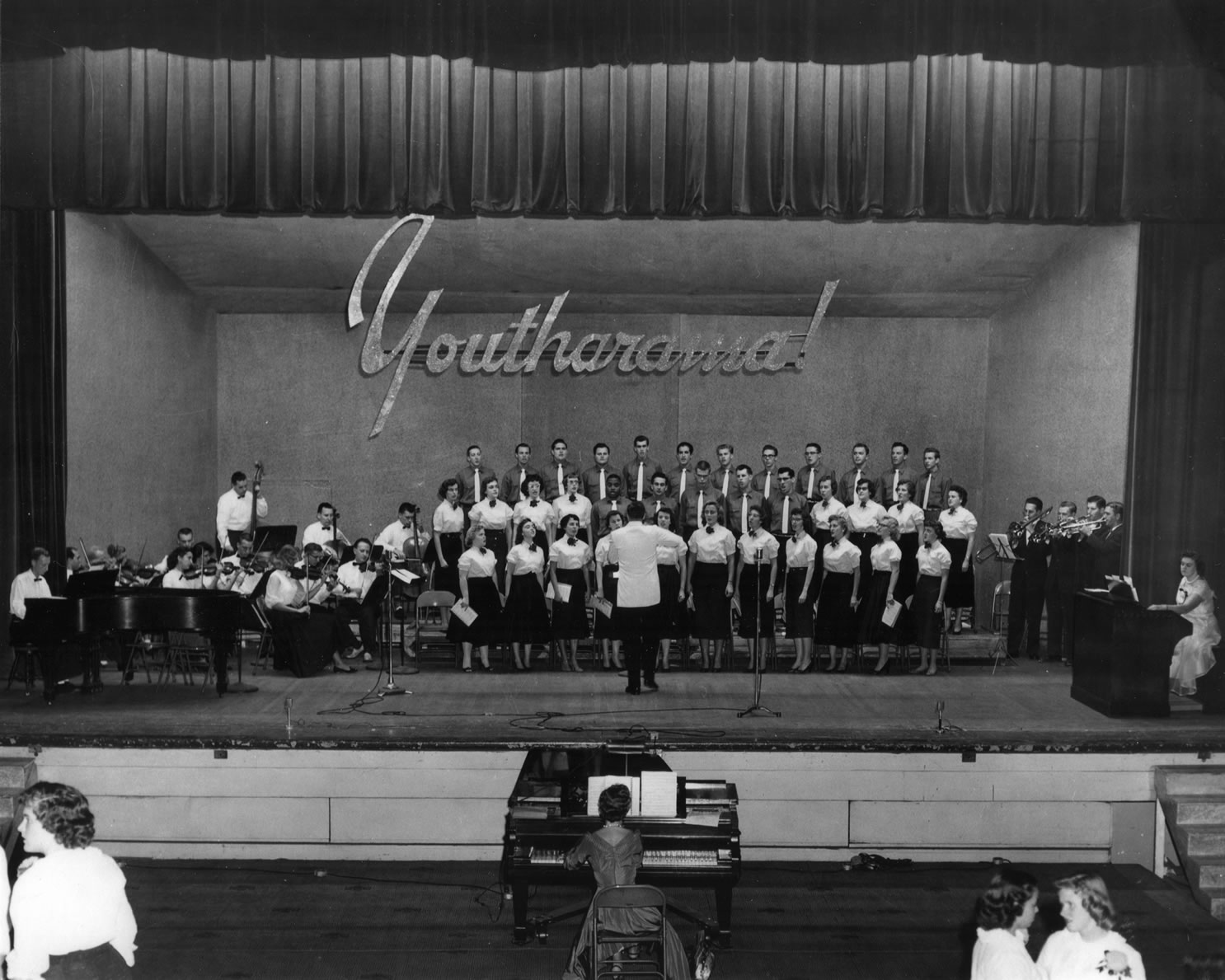 Youtharama. Always thinking of new avenues and strategies for reaching young people with the gospel, Percy started a novel type of youth rally in Philadelphia’s Town Hall in 1956, Youtharama, that emphasized large-scale musical productions with chorus and orchestra under the direction of Chuck Pugh, along with entertaining skits and acts, and high-profile youth-oriented guest speakers. Percy usually stepped in at the close of the meeting to give the invitation and altar call.
Youtharama. Always thinking of new avenues and strategies for reaching young people with the gospel, Percy started a novel type of youth rally in Philadelphia’s Town Hall in 1956, Youtharama, that emphasized large-scale musical productions with chorus and orchestra under the direction of Chuck Pugh, along with entertaining skits and acts, and high-profile youth-oriented guest speakers. Percy usually stepped in at the close of the meeting to give the invitation and altar call.
A Broadcasting Network. With proven entrepreneurial ability, he began building a Christian Broadcasting Network in 1958 that eventually included six radio stations and one television station, thereby opening up greater access to communication channels for the cause of evangelism. Percy and the Young People’s Church of the Air began operating the UHF television station WPCA in Philadelphia on July 17, 1960, the first religious station in the nation and the world. He died in October of that year, shortly before his own TV program was scheduled to begin broadcasting. (Percy’s son Donald began managing the stations after Percy’s death and built the network into the Crawford Broadcasting Company, still operating more than 55 years later.)
Over 34 years, Percy Crawford burned himself out for the Lord he loved, bringing tens of thousands of souls to a new life in Christ. He died on October 31, 1960 of a heart attack suffered while driving to a Youth for Christ evangelistic meeting in Lancaster, PA.
Bibliography
Percy Crawford, The Art of Fishing for Men (Philadelphia: Mutual Press, 1935; paperback ed. Moody Press, 1950).
Percy Crawford, “A Modern Revival,” Revelation (August, 1932, pp. 325, 349-50).
Dan D. Crawford, A Thirst for Souls: The Life of Evangelist Percy B. Crawford (1902-1960), (Susquehanna University Press, 2010).
Love Wonderful Love: Remembering Ruth & Percy Crawford, a 101-page booklet that contains 175 photos and 51 selected songs from Percy’s and Ruth’s selected songbooks. Reproduced at www.ruthandpercycrawford.com along with many additional photographs.
Joel Carpenter, Revive Us Again: The Reawakening of American Fundamentalism (Oxford University Press, 1997, ch.9).
Mel Larson, Youth for Christ. (Zondervan, 1947, especially pp. 33-35).
Robert Bahr, Man With a Vision: The Story of Percy Crawford (Moody Press, no date [approx. 1961]). (Some of this material is undocumented.)
Gerald F. Vaughn, “Evangelist Percy Crawford and The King’s College in Delaware, 1941-1955,” Delaware History 27, nos. 1-2 (Spring 1996-Winter 1997): 19-41.
